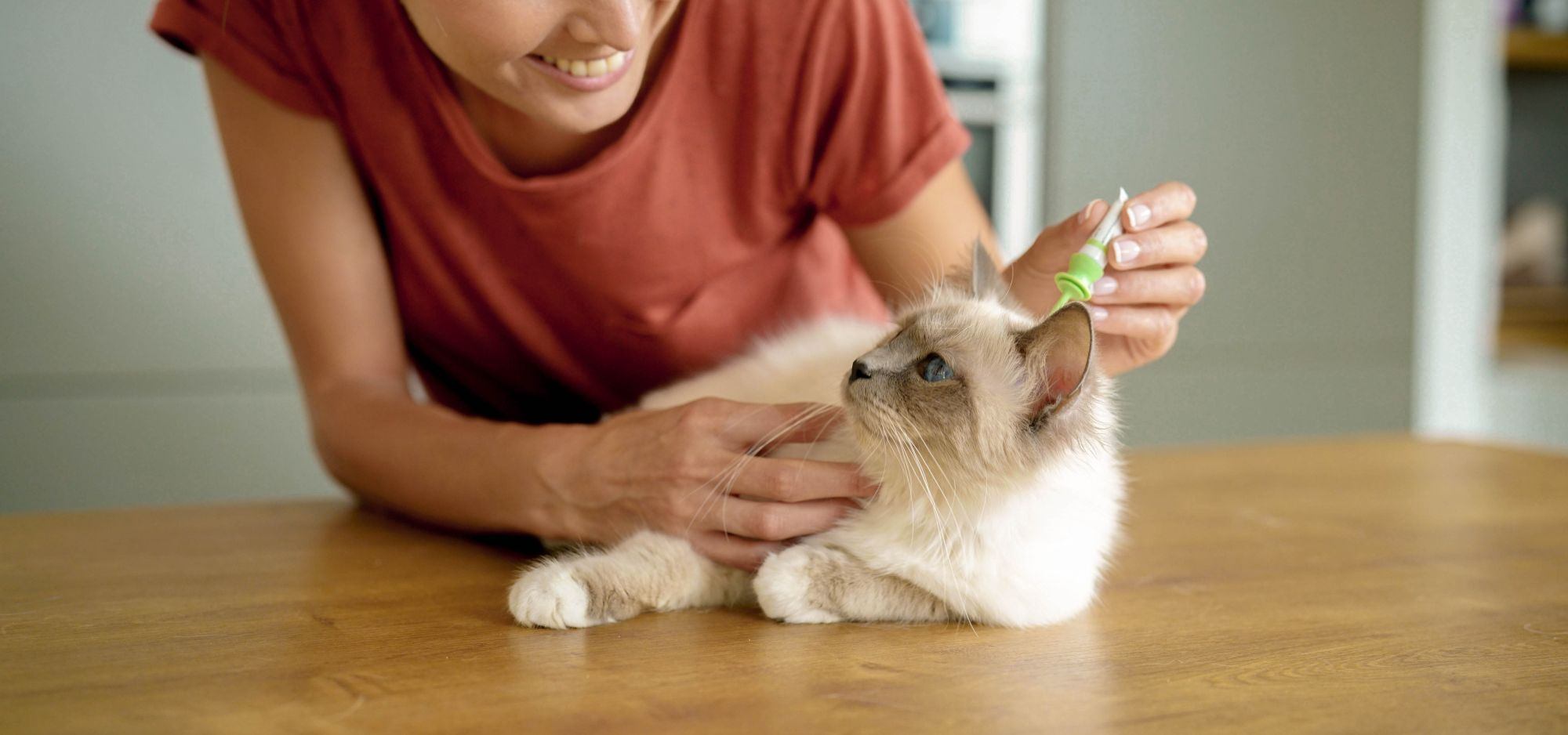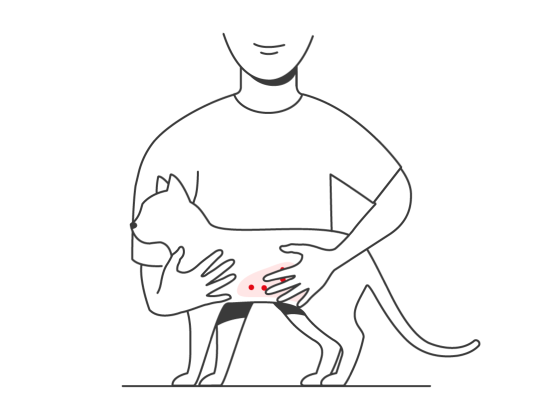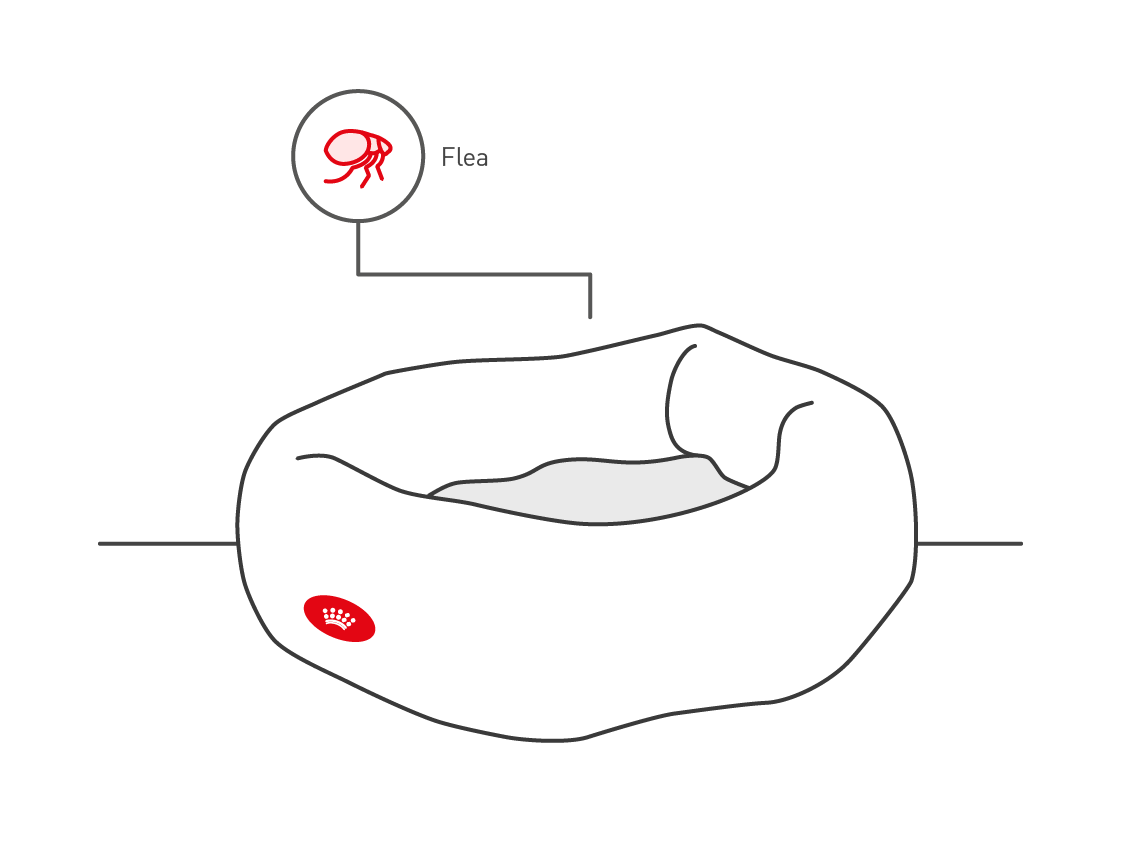Best way to get rid of cat fleas
Article

There are several ways to eliminate cat fleas. Your vet will help you choose the best option for your cat. Treatments can be provided to stop fleas from passing onto your other pets and spreading throughout your home.
Fleas can make cats uncomfortable. They spread rapidly, bite intensively, and can cause cats all kinds of skin issues. Here, we look at the health problems associated with fleas, explain how to tell if your cat has fleas, and discuss the various ways in which you can get rid of fleas on your cat.
What are Fleas and What Do They Do?
Fleas are external parasites that feed on the blood of animals. Measuring just 1-2mm in size, these tiny insects jump onto hosts, where they bite and pierce the skin. Flea bites can be painful, causing skin inflammation and itchiness, which is why cats with fleas often scratch.
Fleas reproduce rapidly. A female flea will begin laying eggs one to two days after she first consumes blood, and she may lay up to fifty eggs per day. This means a cat can quickly become infested with fleas, and the accompanying blood loss may be dangerous, especially if the cat is already sick, elderly, or a kitten. Once established, fleas can easily spread to other animals, and while cat fleas can’t live on humans, they can still bite.
Once fleas have established themselves on a cat, flea eggs will start to fall into the environment, where they will hatch into larva. Flea larvae eat organic material to mature into pupae, and in the right conditions, these pupae can stay inactive for months before hatching. So even if you get rid of your cat’s fleas, they can return later if your home isn’t fully sterilized.
Fleas can also infect cats with an internal parasite known as a tapeworm. As larva, fleas sometimes consume tapeworm eggs, and if a cat eats one of these infected fleas, the tapeworm can spread to the cat, where it will mature.
One further complication is that cats can sometimes develop an allergy to flea saliva if they’re repeatedly bitten. This increases the cat’s itchiness and can lead to crusts, sores, and skin infections.

How to Tell if a Cat Has Fleas
Itchy skin is the most common reaction to fleas, and a cat will normally try to relieve their pain and irritation by scratching, biting, and overgrooming themselves.
But there are other signs that a cat may have fleas:
- Skin redness and rashes
- Crusts
- Wounds or lesions, especially around the base of the tail
- Head shaking
- Weakness, tiredness, and pale gums (due to blood loss)
- Hair loss, particularly around the tail and neck
- Thick skin
You may even spot fleas jumping and moving about on your cat. Adult fleas are small insects, with a flat body, and are usually brown to black in color. If you see tiny white specks in your cat’s fur or about your home, these are probably flea eggs, while black nodules that look like pepper, are most likely flea feces.
Sometimes adult fleas are hard to find because they are removed due to cats being attentive groomers.
Allergies and other parasites like ticks, lice, and mites may also cause skin problems for cats, so if you notice any of the signs we’ve highlighted here, visit your vet for a thorough diagnosis.
Step-by-Step Guide to Checking for Cat Fleas
Sometimes fleas aren’t hard to find, and you may see them darting around as soon as you check your cat. For smaller infestations, you may need to do a little investigating to find signs that fleas are present.
Here are our top tips when checking for fleas on a cat:
- Begin by observing your cat. If they’re constantly scratching, biting, or licking a particular part of their body, it could indicate a problem in that area.
- Fleas will often target warm and covered areas on a cat's body, such as the region around the groin and armpits. You may notice that the skin appears red, lumpy, or scabby in those areas. The base of your cat’s tail may also show similar signs, while your cat’s ears may appear dirty or red if fleas are present.

- A flea comb will make your search easier. To use the comb, slowly move it through the hair on your cat’s back and legs, and run it as close to the skin as you can. The comb will catch and pull fleas out of your cat’s hair, so have a bowl of soapy water on hand to wash the comb and dispose of any fleas that you find.
- One way to detect flea dirt is to place a piece of white paper under your cat while you’re brushing. If black specks fall onto the paper, you can sprinkle them with a little water to see if they're from fleas. Once wet, flea dirt will often turn reddish -brown due to the presence of digested blood.

- You can also widen the search to your home. Try checking the places where your cat spends a lot of time, like beds, feeding areas, and windowsills. Always look for the black pepper nodules that indicate flea dirt.
- Walk around your house in white socks for the day. This will make it easier to spot dark fleas when they jump onto the white socks from the floor. You can also check the soles of your socks for fleas throughout the day.

When to Speak to Your Vet about Cat Fleas
If you find evidence of fleas on your cat or about your home, you should speak to your vet. Fleas proliferate rapidly and can easily spread to other pets and family members. Swift veterinary treatment is the best way to stop their spread and relieve your cat’s discomfort.
If your search for fleas came up empty, but your cat is still scratching, you should still contact your vet so that they can investigate your cat’s skin issues.
How to Get Rid of Fleas on Your Cat
Shampoos, pills, spot control... there are several flea treatments your vet may recommend for your cat.
While you can buy flea remedies in pet shops and online stores, they do vary in performance, and may not necessarily target both adult fleas and larvae. Home remedies can also be unreliable.
Your vet can assess the extent of your cat’s flea problem and recommend the most appropriate flea treatment, including veterinary-exclusive products that contain adulticides, and insect growth regulators (IGRs) which prevent larvae from maturing.
Your cat may also need treatment to resolve their skin issues and may require deworming if a tapeworm infestation is suspected.
But what about the fleas in your home? As we’ve already mentioned, if you don’t kill the adult fleas and pupae in your cat’s environment, they can easily return.
Luckily, there are several flea sprays available for the home, including ones that contain IGRs. When using one of these sprays, you’ll want to thoroughly treat your entire home, before concentrating on your cat’s favorite places – such as their beds, hiding areas, and perches. Larvae will typically burrow themselves away from sunlight in hard-to-reach areas, so be sure to spray between floorboards and move furniture around to ensure complete coverage. Remember to vacuum your home before you spray.
Machine washing your cat’s bedding is also essential, as the hot water removes eggs and dead fleas. But you may want to replace the bedding entirely if your cat had a particularly heavy infestation.
It’s important to follow the product instructions whenever you use an insecticide. While they are usually designed to be safe for cats, other pets may be affected, so it’s always best to speak to a vet before use.
If you do use a shop-bought remedy, make sure you tell your vet to avoid combining insecticides. Also, be aware that dog flea treatments should never be used on a cat. If you believe you have used the incorrect product on your cat, immediately contact the pet poison helpline or ASPCA pet poison control for advice.
Like & share this page